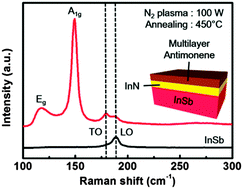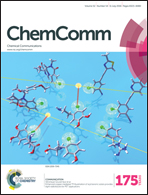The advent of multilayer antimonene nanoribbons with room temperature orange light emission†
Abstract
Multilayer antimonene nanoribbons with room temperature orange light emission uniformly distributed on InSb were synthesized by the plasma-assisted process. The bandgap opening was caused by the quantum confinement effect of the nanoribbon structure and the turbostratic stacking of antimonene layers. This attractive two-dimensional material, whose band structure is proper for applications of transistors and light-emitting diodes, was first synthesized.


 Please wait while we load your content...
Please wait while we load your content...